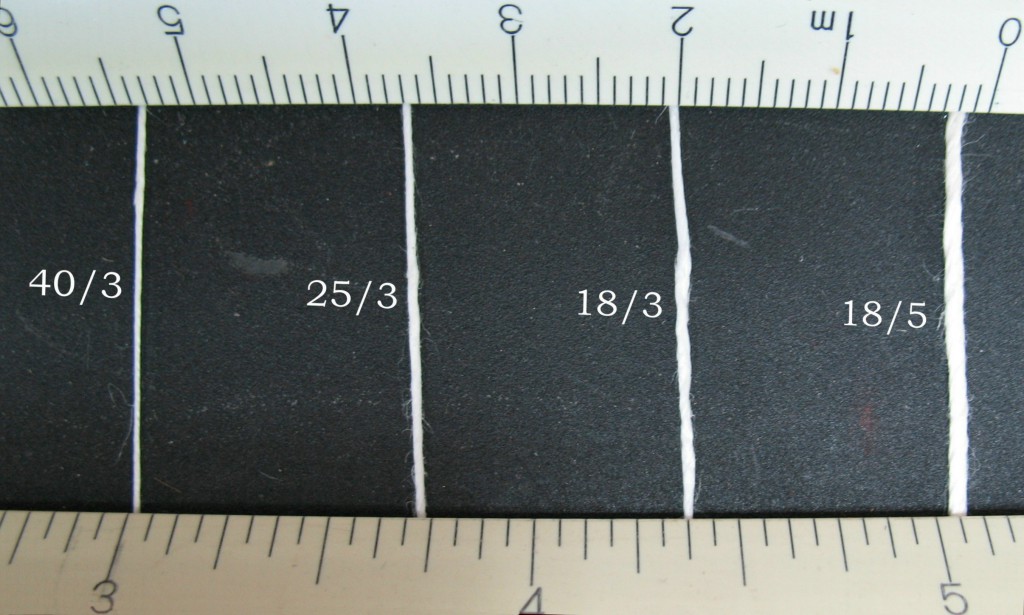Every now and then someone asks us how thick our linen thread is, or whether it is the same as some other thread they have used. Our thread sizes are specified by two numbers separated by a slash, such as “18/3”.
The number after the slash indicates the number of plies (strands) that have been twisted together to make the final thread, 3 in this case. The larger the number, the heavier the thread. Generally these plies can be easily separated and counted, but we don’t recommend splitting the thread and sewing with a single ply. The double twist of a plied thread keeps the fibres in the individual plies twisted; a single ply by itself would tend to untwist and lose strength.
The number before the slash is more complicated. It represents the number of 300-yard lengths of the strand (not the finished thread) it takes to weigh one pound. Thus the larger the number, the finer the strands. This is called the “Linen count” and is different than what is used for other fibres. There are for instance also a Wool count, a metric count (number of kilometres in one kilogram of thread), and a Tex number (number of grams per kilometre, equal to 1000/metric count).
If you take the combined thread size as a fraction, it will then represent the number of 300-yard lengths of thread it takes to weigh one pound. Our lightest thread is size 40/3, which implies that it takes 40/3 = 13⅓ 300-yard lengths, i.e. 4000 yards, to weigh one pound. Our (current) heaviest thread is size 18/5, which takes 18/5 = 3.6 300-yard lengths, i.e. 1080 yards, to weigh one pound. The heaviest thread is 3.7 times heavier than the lightest one, and would be expected to be about 1.9 (square root of 3.7) times the thickness.
This photo shows samples of the thread we sell, with a millimetre scale (labelled in centimetres) above and an inch scale below.
 A little fooling around in the photo editor verifies that the 18.5 is about twice the thickness of the 40/3. I think it is slightly less tightly spun, making it a bit fluffier and therefore thicker that its weight would imply.
A little fooling around in the photo editor verifies that the 18.5 is about twice the thickness of the 40/3. I think it is slightly less tightly spun, making it a bit fluffier and therefore thicker that its weight would imply.
So given the ply count and weight for a measured length, you could figure out the thread size using this system. But you might just be better off getting a ruler and magnifier.

There is a good description of thread sizing at http://designer-entrepreneurs.com/blog/illustrations/Thread_Sizes.htm